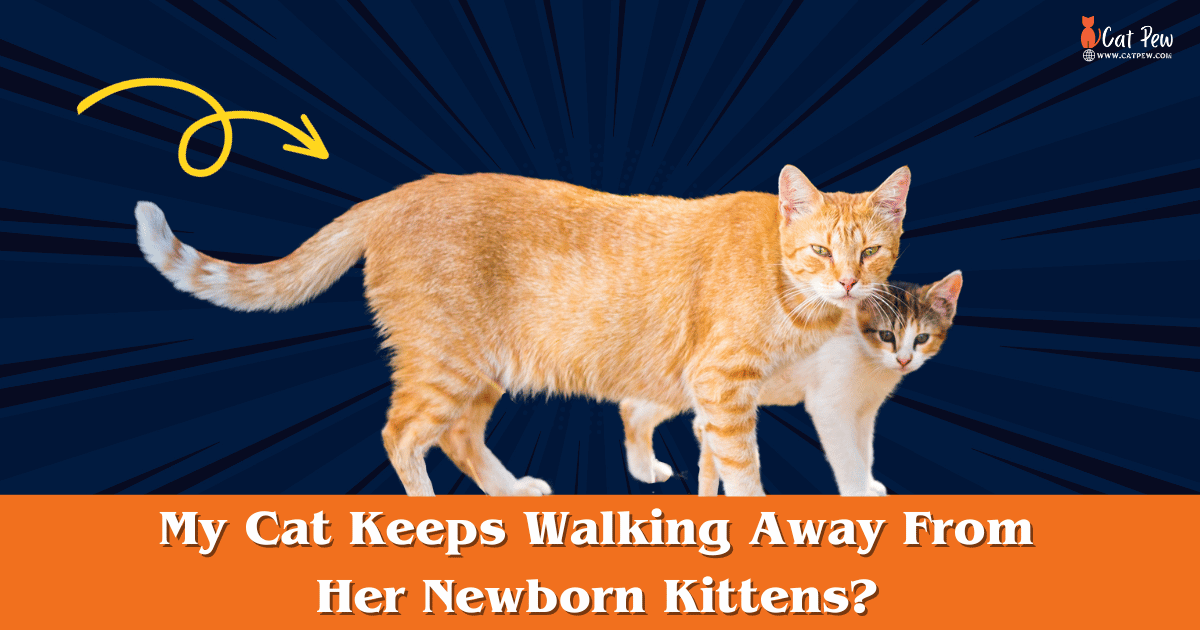My Cat Keeps Walking Away From Her Newborn Kittens?
If your cat is consistently walking away from her newborn kittens, it is essential to address the issue promptly and provide the care and attention necessary for the well-being of the kittens. This behavior could occur due to various reasons, such as discomfort, stress, or a lack of maternal instincts.
To encourage your cat to stay with her kittens, ensure she has a quiet and comfortable space away from disturbances, provide her with a balanced diet, and gently encourage her to spend time with the kittens using positive reinforcement techniques.
Additionally, consulting a veterinarian can provide valuable insights and guidance in resolving this issue. Overall, it is crucial to prioritize the health and welfare of both the mother cat and her young ones.
Understanding The Natural Behavior Of Mother Cats
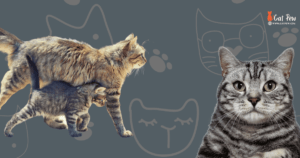
When you bring home a litter of adorable newborn kittens, it can be concerning to see the mother cat constantly walking away from them. However, it’s important to remember that this behavior is completely natural for mother cats. Understanding the instinctual behaviors and role of maternal instincts in cat behavior can help you better comprehend why your cat exhibits this behavior.
Instinctual Behaviors Of Mother Cats
Mother cats possess a variety of instinctual behaviors that dictate their interactions with their newborn kittens. These behaviors have evolved over centuries to ensure the survival and well-being of the offspring. Some of the key instinctual behaviors include:
- Mother-cat grooming: Mother cats constantly groom their kittens to maintain their cleanliness and stimulate circulation. This grooming behavior also reinforces the bond between the mother and her kittens.
- Provision of a safe nest: Mother cats have an innate drive to create a secure nest for their kittens. This can involve finding a quiet and secluded spot in the house where they feel their kittens will be protected from potential predators or disturbances.
- Feeding: Nursing is a crucial aspect of mother-cat behavior. The mother will intermittently nurse the kittens, ensuring they receive the necessary nutrition and build a strong immune system.
- Moving kittens: Mother cats often move their kittens to different locations within their nest or even to new hiding spots in the house. This behavior serves as a protective measure to prevent potential threats from discovering the kittens.
Role Of Maternal Instincts In Cat Behavior
Maternal instincts play a vital role in shaping the behavior of mother cats. These powerful instincts guide the mother’s actions to ensure the survival and development of her kittens. It’s important to understand that while we may perceive a mother cat walking away from her newborn kittens as an act of rejection, it is merely a manifestation of her instinctual drive to protect her offspring.
The mother’s constant movement away from her kittens is often rooted in her desire to safeguard them. By exploring the surroundings and assessing potential dangers, she can better protect her vulnerable offspring. This behavior is especially important in the wild, where predators may be lurking.
Furthermore, moving kittens serves as a protective mechanism. By frequently changing their location, the mother cat reduces the likelihood of predators tracking the scent and discovering their nest.
It’s crucial to allow the mother cat the freedom to exhibit her instinctual behaviors, even if it means temporarily walking away from her kittens. Providing a calm and secure environment encourages her to fulfill her maternal duties effectively.
| Key Takeaways: |
|---|
| Mother cats have instinctual behaviors to groom, provide a safe nest, feed, and move their kittens. |
| Maternal instincts guide a mother cat’s actions and are crucial for the survival of her kittens. |
| The constant movement and repositioning of kittens are protective measures to keep them safe from potential threats. |
| Allowing the mother cat to exhibit her natural behaviors ensures the well-being of the kittens. |
Possible Reasons For The Behavior
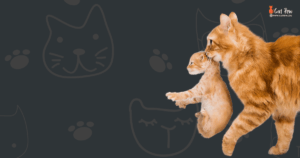
One possible reason why a cat may walk away from her newborn kittens could be due to stress or anxiety. It is important to create a calm and safe environment to help the mother cat feel comfortable and confident in caring for her offspring.
One common concern for cat owners is when their mother cat repeatedly walks away from her newborn kittens. This behavior can be puzzling and worrisome, but it’s important to understand that there can be valid reasons behind it. By addressing these possible reasons, you can better support your cat and ensure the well-being of both the mother and her kittens.
Physical Discomfort Or Pain
One possible reason for a mother cat to walk away from her newborn kittens is physical discomfort or pain. Just like humans, cats can experience postpartum complications such as mastitis or uterine infection. These conditions can cause discomfort and pain, making it difficult for the mother cat to stay with her kittens. It’s essential to closely observe your cat for signs of physical discomfort, such as excessive licking, aggression when touched, or a lack of appetite. If you suspect your cat is in pain, consult with a veterinarian as soon as possible to ensure proper treatment.
Lack Of Maternal Bonding
Another factor that may contribute to a mother cat walking away from her newborn kittens is a lack of maternal bonding. While most mother cats instinctively care for and nurse their offspring, some may struggle to develop a strong maternal bond. This could be due to various reasons, including the cat’s age, lack of experience, or stress. It’s crucial to provide a calm and safe environment for the mother cat and her kittens, allowing her the opportunity to become comfortable and develop a bond with her offspring. Additionally, you can assist by gently guiding and encouraging the mother cat’s interactions with her kittens.
High-stress Environment
A high-stress environment can also play a role in causing a mother cat to walk away from her newborn kittens. Cats are sensitive creatures, and stressors such as loud noises, frequent disruptions, or the presence of other animals can overwhelm them, leading to avoidance behavior. To support your cat, create a quiet and secluded space where she can care for her kittens without external disturbances. Minimize interactions with the mother cat during this period, allowing her to acclimate to her new role at her own pace. Gradually introducing positive stimuli, such as soft music or gentle stroking, can help create a calming environment. In conclusion, if your cat keeps walking away from her newborn kittens, consider potential reasons such as physical discomfort or pain, lack of maternal bonding, or a high-stress environment. By addressing these factors and providing appropriate support, you can help your cat feel more secure and attentive to her kittens’ needs. Remember, always consult with a veterinarian if you suspect any underlying health issues or if you have concerns about your cat’s behavior.
Identifying Signs Of Stress Or Discomfort

If your cat keeps walking away from her newborn kittens, it could be a sign of stress or discomfort. Pay attention to her body language, excessive grooming, or aggressive behavior for possible clues. Providing a calm and secure environment may help her feel more comfortable and connected to her kittens.
It can be concerning and puzzling when your cat walks away from her newborn kittens. As a responsible cat owner, it’s important to understand the reasons behind this behavior. One common factor could be stress or discomfort. Cats are highly sensitive creatures, and various situations can trigger stress or discomfort in them.
Body Language Cues To Look Out For
When trying to identify signs of stress or discomfort in your cat, paying close attention to her body language is crucial. Cats have a unique way of communicating nonverbally, and certain cues can indicate their emotional state.
- Tail Position: A low or tucked tail could signal distress or fear. Conversely, an upright and bushy tail typically indicates a calm and content cat.
- Ears: If your cat’s ears are flattened or pinned back against her head, it could indicate anxiety or discomfort. On the other hand, relaxed and forward-facing ears generally suggest a happy and at ease feline.
- Whiskers: When your cat feels threatened or stressed, her whiskers may flatten against her face. However, if her whiskers are relaxed and fanned out, it suggests a more relaxed state.
- Posture: A hunched or crouched posture can be a sign of discomfort or unease. A confident and relaxed cat, on the other hand, will have an open and upright posture.
Behavioral Changes In The Cat
In addition to observing your cat’s body language, changes in her behavior can provide valuable insights into her emotional well-being. Unusual behaviors or deviations from her normal routine may be indicators of stress or discomfort.
- Increased Aggression: If your cat becomes unexpectedly aggressive towards you, other pets, or her kittens, it could be a sign that she’s feeling stressed or uncomfortable.
- Excessive Grooming or Self-Mutilation: Cats may resort to excessive grooming or even self-mutilation as a way to cope with stress. Keep an eye out for any signs of hair loss, skin lesions, or constant licking.
- Withdrawal or Avoidance: Walking away from her newborn kittens could be a sign that your cat is feeling overwhelmed or anxious. She may seek solitude or spend less time bonding with her offspring.
- Appetite and Sleep Changes: Fluctuations in appetite and sleep patterns can also be indicative of stress. Your cat may eat less, experience weight loss, or have difficulty sleeping if she’s feeling uncomfortable.
By being attuned to your cat’s body language and behavior, you can better identify signs of stress or discomfort. If you notice any consistent or concerning changes, it’s essential to consult with a veterinarian who can provide further guidance and support.
Creating An Ideal Environment For Mother Cats
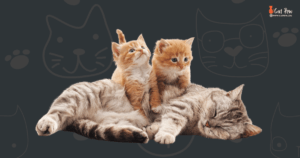
One of the most crucial aspects of creating an ideal environment for mother cats is to provide them with a separate and quiet space. Just like humans, mother cats need a peaceful and secluded area where they can take care of their newborn kittens without any disturbance. By offering a separate space, you can ensure that the mother cat feels safe and comfortable.
- Designate a dedicated room: Set aside a room in your home exclusively for the mother cat and her kittens. This room should be away from high-traffic areas and should provide them with the privacy they need. Consider using a spare bedroom or a quiet corner of your home.
- Minimize external noises: Noise can easily stress out the mother cat and disrupt her bonding with the kittens. Make sure the designated room is away from loud appliances, such as washing machines or televisions. Consider using soundproofing materials, like curtains or rugs, to minimize any outside disturbances.
- Limit human interaction: While it’s important to check on the mother cat and her kittens regularly, it’s equally important to limit human interaction to avoid causing unnecessary stress. Encourage household members to refrain from constant visits to the room to allow the mother cat to establish a sense of security.
- Keep other pets away: If you have other pets in your home, it’s crucial to keep them away from the designated area. Other pets can unintentionally harm the kittens or induce stress in the mother cat. Make sure the room has a secure door or use a baby gate to prevent other pets from entering.
To further create an ideal environment for mother cats, it’s essential to ensure that they have a comfortable and safe nesting area. A nesting area not only provides warmth and comfort but also promotes the bond between the mother cat and her kittens.
Consider these measures when creating a nesting area:
- Choose suitable bedding: Opt for soft and washable materials like blankets or towels to create cozy bedding for the mother cat and her kittens. Avoid using materials with loose threads or excessive padding, as they can pose a choking or entanglement hazard.
- Place a nest box or bed: Provide the mother cat with a designated space, such as a nest box or a cat bed, that offers security and comfort. Nest boxes with low sides ensure easy access for the mother cat, while cozy cat beds provide warmth and a sense of enclosure.
- Maintain cleanliness: Regularly clean the bedding and nesting area to keep it hygienic. This not only ensures the well-being of the mother cat and her kittens but also helps to prevent the spread of germs and parasites. Replace soiled bedding promptly and sanitize the nesting area with pet-safe products.
- Provide access to food and water: Make sure the nesting area is close to a freshwater supply and easily accessible food. This allows the mother cat to care for her kittens without having to leave them for extended periods. Ensure the food and water bowls are clean and filled regularly.
Practical Tips To Encourage Maternal Bonding
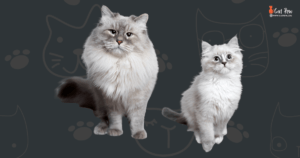
Helping your cat form a strong bond with her newborn kittens is essential for their well-being and development. Sometimes, however, a mother cat may exhibit signs of disinterest or even walk away from her little ones. If you are facing this situation, there are several practical tips you can follow to encourage maternal bonding. By gently handling and interacting with the kittens and gradually introducing the mother to her offspring, you can help strengthen the maternal instinct and create a loving and nurturing environment for the whole feline family.
Gently Handling And Interacting With The Kittens
Gentle handling and interaction with the newborn kittens can play a crucial role in helping the mother cat develop a strong maternal bond. Here are a few tips to consider:
- Keep handling sessions short: Newborn kittens are delicate and easily overwhelmed, so it is important to keep handling sessions brief. Limit each session to a few minutes at a time to avoid causing stress or anxiety for the mother.
- Introduce scent transfer: Rubbing a soft cloth or towel on the mother cat and then gently stroking each kitten with it can help transfer her scent. This not only aids in bonding but also helps establish each kitten’s identity within the litter.
- Use soft and soothing touch: When handling the kittens, use a gentle touch to mimic the mother cat’s licking and grooming behavior. Stroke them softly to comfort and reassure them during these sessions.
- Ensure a quiet and calm environment: Find a quiet and secluded area where the mother cat and her kittens can bond without distractions. Avoid sudden loud noises or excessive foot traffic to maintain a calm atmosphere.
Gradual Introduction To The Kittens
A gradual introduction process is important when reintroducing the mother to her kittens if she has shown signs of disinterest. Follow these tips to increase the chances of successful bonding:
- Scent swapping: Rub a cloth or towel on the kittens and then place it near the mother cat’s resting area. This allows her to become familiar with their scent without direct contact.
- Supervised visitations: Under close supervision, allow the mother cat to spend short periods with her kittens. Gradually increase the duration of these supervised visits as the bond strengthens.
- Positive reinforcement: During supervised visitations, provide treats or her favorite food to the mother cat, reinforcing the association between her presence and positive rewards. This can help create positive experiences with the kittens.
- Monitor interactions: Observe the mother cat’s behavior closely during visitations. Look for signs of acceptance such as sniffing, licking, and grooming. If she shows any signs of aggression or stress, separate them and try again later.
Remember, each cat is unique, and the bonding process may take time. Be patient and provide plenty of opportunities for them to bond naturally. If you have any concerns about the health or safety of the kittens or mother cat, consult a veterinarian for further guidance and support.
Frequently Asked Questions For My Cat Keeps Walking Away From Her Newborn Kittens
Why Is My Cat Ignoring Her Newborn Kittens?
Mother cats may ignore their newborn kittens for various reasons, such as stress, fear, or lack of maternal instincts. It’s crucial to give the cat a quiet and safe space to nurture her babies. Additionally, consult a veterinarian to ensure there are no underlying health issues.
Why Is My Cat Running Away From My New Kitten?
Cats may run away from new kittens due to territorial instincts. They might feel threatened or stressed by the newcomer. Gradually introduce them and provide separate spaces. Exchange scents and use positive reinforcement to foster a positive relationship between them.
Why Does My Cat Run Away From Her Kittens?
Cats may run away from their kittens for various reasons, like stress, fear, or feeling overwhelmed.
Is It Normal For A Cat To Leave Her Newborn Kittens?
Yes, it’s normal for a mother cat to temporarily leave her newborn kittens. She does this to find food, use the litter box, or just take a break.
Conclusion
To help your cat bond with her newborn kittens, it’s important to understand her behavior and provide a safe, comfortable environment. Gradually introduce her to the kittens and give her space to adapt. Offer her plenty of support, attention, and nourishment during this crucial period.
By being patient and understanding, you can create a positive atmosphere that encourages your cat to nurture her offspring with love and care. Remember, every cat is unique, so it may take time for her to fully embrace her mothering instincts.

Winston
I'm Winston, the author of this feline-focused (Catpew.com) blog . My love for cats goes back to my childhood, when I spent countless hours playing with my family's tabby, Mittens. This furry friend instilled in me a deep appreciation for the unique personalities, playful nature, and unconditional love that cats offer.

